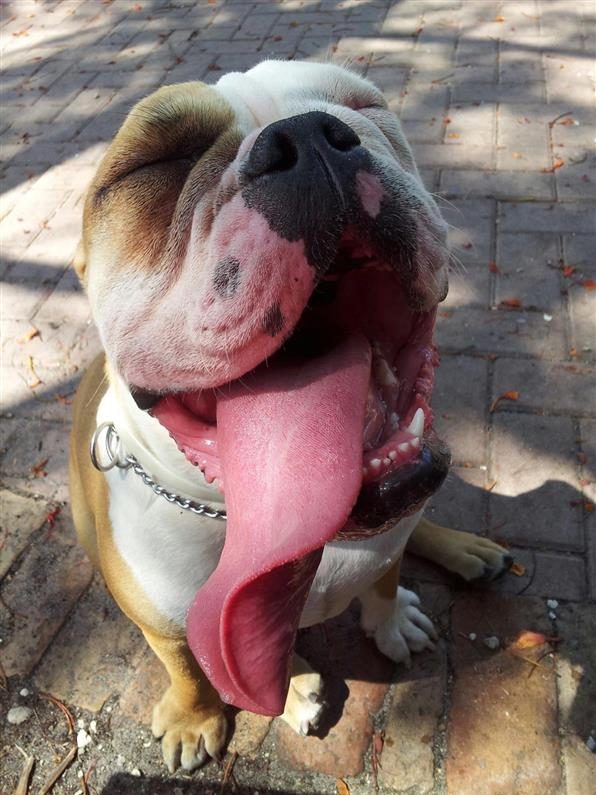Tips on How to Avoid Pet Heatstroke
By Dr. Millington
It’s summertime! The sun is shining, and the lake is calling. It certainly is a tempting time to get outside with your pet. However, pet owners must also be aware of the very real danger that is heat stroke in dogs.
In this article we will cover the following:
- Heat Stroke vs Heat Exhaustion in Dogs
- Signs of Heat Stroke in Dogs
- Heat Stroke in Dogs – Internal Effects
- Heat Stroke Treatment
- How to Avoid Heat Stroke in Dogs
- Can Cats Get Heat Stroke?

Heat Stroke vs Heat Exhaustion in Dogs
There are a couple of heat related illnesses of which you should be aware. The first, and less severe, is heat exhaustion. Heat exhaustion is going to be the beginning stages of heat stroke. Typically, if a pet is given proper attention during the signs of heat exhaustion, veterinary intervention can be avoided. Signs of heat exhaustion in pets include:
- Panting heavily
- Drooling excessively
- Lagging behind on a run/walk
- Having a temperature >105
Although your pet may be displaying these symptoms, it does not mean that they are suffering from heat exhaustion. It does mean that they are at a very high risk, and that proper preventative care should be taken immediately. What should you do if you are out with your pet and notice some of these symptoms?
- Cease the activity (stop running, playing fetch, etc.)
- Get your pet to a cooler, well ventilated area
- Put a fan, near their head/mouth
- Get pet near fresh water and allow them to drink at their will
Taking these actions when you notice these symptoms, can prevent the progression of heat exhaustion to heat stroke. Understand you may have to be creative in certain situations. For example, if you notice signs of dog heat exhaustion while on an afternoon jog, then get them under a tree for some shade in an area where there is a decent breeze until they have recovered enough to walk home or back to the car.
Sings of Heat Stroke in Dogs
But what happens if the symptoms are not appreciated soon enough and heat stroke has occurred. Firstly, what are the symptoms that indicate heat stroke vs heat exhaustion in dogs? The signs of heat stroke in dogs include:
- Severe weakness
- Diarrhea
- Vomiting/nausea
- Collapse
- Seizures
- Temperature >107

If any of these symptoms are noted, you should seek immediate veterinary care. Time is of the essence to prevent ongoing heat related injury. Chefs will understand the concept of “carry-over” cooking. This is the idea that when you remove something that is cooking from the oven, it doesn’t immediately stop cooking. That is, the loaf of bread or roast still has a lot of heat in it, and will continue to cook for a while even outside of the oven. Similarly, if your pet heats up to a certain point, they will continue to suffer heat damage until they cool down. Unfortunately, most external methods of cooling a pet down at home will not suffice. These patients need veterinary intervention, most notably IV fluids.
However, heat stroke unfortunately causes a cascade of reactions to occur. And although you may get your pet to a veterinarian quickly, IV fluid therapy is started rapidly, and your pet will consequently be cooled to normal temperature (100-103). There will likely be some continued damaged that will need therapy.
Heat Stroke in Dogs: Internal Effects
What happens internally to our pets during a heat stroke event? A prevailing idea that permeates heat injury is the idea of mass. Objects w/ larger mass are more difficult to cool down. The largest organs in the body are the intestinal tract and the liver. These two organs are referred to as the “shock” organs. They are physically the largest organs with the largest blood supply. When they are inadvertently heated to an inappropriate level, they sustain damage and we see the results. In the case of the intestinal tract, it is witnessed in the form of diarrhea, which is often very bloody and vomiting. We also see extreme elevations in liver inflammatory markers on lab work in the case of livers. And most concerning, we see clotting disorders. The liver is the organ responsible for making the clotting factors that allow our body to stop any bleeding, internal or external. Without functioning clotting cells, our pets are at an extreme risk of internal bleeding.
When a body goes into this state of shock it is quite literally diverting blood to only the most vital organs, primarily heart, lungs, and brain. It does so by constricting some of the main vessels that supply the body. Although that will keep the body technically alive for the short term, there are consequences. This results in abrupt drop in peripheral blood pressure and severe weakness and collapse. Quick action must be taken to avoid long term damage…most importantly IV fluid therapy.

Heat Stroke Treatment
How do we address all these problems? I’ve mentioned the mainstay of heat stroke therapy twice now, which is IV fluid therapy. This functions to cool the body down by injecting large volumes of room temperature fluid into an overheated body. IV fluid therapy also increases the circulating volume of blood to help restore blood pressure. We next need to address the additional symptoms that may be exacerbating any dehydration, such as vomiting and diarrhea. These issues are treated symptomatically with a variety of anti-diarrhea and anti-emetics. Finally, often we must give blood products to replace the temporary loss of clotting factors until the liver can recover and start functioning normally.
Not every pet suffering from heat stroke will require this extensive therapy, but many do.
How to Avoid Heat Stroke in Dogs
Ideally, we want to do all we can to avoid heat stroke or heat exhaustion in the first place. What are some of the risk factors for our pets? I would like to break this down to what I’m going to refer to intrinsic and extrinsic factors. Intrinsic factors being those traits about your pet that may allow them to overheat easier than others, extrinsic being those outside factors, primarily the weather that put any pet at a greater risk.
Heat Stroke in Dogs Intrinsic Factors Include:
- Mass – more mass, more difficult to cool down. Some pets like a Great Pyrenees will just be much larger than a Yorkie and be at a higher risk.
- Weight – also a mass issue, an overweight Yorkie will have a more difficult time cooling down than one of ideal body weight.
- Hair Coat – A Labrador although similarly sized to a German Short-haired Pointer, will have a much more difficult time cooling down due to having a thicker hair coat.
- Breed – brachycephalic breeds (or “smoosh faced” breeds), will inherently have a difficult time cooling down because of their small airways.
The main method of cooling down for our dogs is through panting. Their tongue has a very significant blood supply and that is where most of their heat is dissipated via evaporation and convection. Unfortunately, dogs do not sweat and don’t lose much heat through their body, especially those with a thick undercoat. Also, because convection of heat through the tongue is such a significant source of heat dissipation, putting a fan that blows across their face and tongue can be very efficient at cooling them down. Pet’s will also cool down by literally blowing heat off through their breathing. Consequently, a pet that has a compacted airway and is not able to blow much air across the tongue will have a harder time cooling down.
Heat Stroke in Dogs Extrinsic Factors Include:
- High temperatures
- High humidity
- No air movement, such as being locked in a car.
- Rapid change in environments – no acclimation
Can Cats Get Heat Stroke?
I’ve spent this entire article discussing heat related injury in dogs, so you may be wondering if this translates to cats. The short answer is yes, cats can get heat stroke. Physiologically, everything mentioned regarding the risk factors for dogs are a risk factor for a cat.

The most notable reason we hear of cat heat strokes less, is because we aren’t typically taking our feline friends for runs or to the park or lake with us. And thus, because they are typically much more independent, they aren’t joining us for our outdoor activities. That being said, cats are at more of a risk than dogs, because they don’t dissipate heat very well at all. Most of the time if you see a cat panting, you need to seek veterinary care immediately. Thankfully, our feline friends self-regulate their activity very well, and usually don’t get to the point of heat exhaustion or stroke.
There is one occurrence that puts cats and dogs equally at risk, and that’s being left in a non-running vehicle. I won’t bore you with another graphic representation indicating temp outside vs temp inside relative to time. Suffice it to say, don’t ever leave your pet in an un-running vehicle.
There are certain situations that any dog will be at risk of heat stroke, for instance the recent days of heat indexes in the 110+ levels. But more often than not, there are many factors at play that may put one pet at more risk than another. It is important to examine those risk factors before you decide to take your pet out for a day of fun.
This article was written by Dr. Ryan Millington. You can book an appointment with him today!
